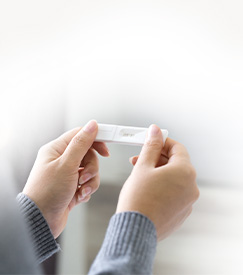
Many people have the misconception that being a birth mother starts and ends with the physical. Yes, of course the birth mother physically carries the child for the pregnancy, but her connection extends beyond that, and often her involvement in the child’s life does as well. In this article we’ll discuss what it means to be a birth mother, and how you can define that term to fit your own life.
Decisions Made
The term ‘birth mother’ represents an incredibly difficult decision — arguably the hardest decision someone can ever make. Behind every birth mother there is hours and hours of deliberation and consideration, carefully weighing her options.
A lot of things may factor into her decision, from her plans for her own life to her ability to provide for the child. She may also consider her family situation, health issues, and her personal feelings about parenthood before choosing adoption.
Another decision that the birth mother must make is which family to place her child with. Birth mothers look at countless profiles, spend time narrowing down their search, and considering what is important to them when it comes to where to place their child.
There’s a lot that goes into making the decision to place your child for infant adoption, and the mental and emotional work that goes into this decision cannot be overstated. Placing a child for adoption is hardly taking the “easy way out”; it is in actuality the opposite.
Taking Care
While most people think of taking care of the baby as something that’s done after the child is born, the birth mother has to manage the health of herself and her child during the pregnancy, which is far more involved than many are aware of. There are numerous doctor’s appointments and tests to deal with, food restrictions to be aware of, not to mention the symptoms and discomfort she has to deal with for nine months or more.
Being a birth mother means she has chosen to undertake these difficulties in order to bring her child into the world for infant adoption.
Open Adoptions
While closed adoptions have become the Hollywood Stereotype over the years, with movies and television depicting adopted children who have no idea who their biological parents are, now the more common option is an open adoption, meaning the birth family keeps in contact with the child over the years. The amount of contact varies by adoption, as this is determined by the adoptive and biological families ahead of time, but now many birth mothers are able to get to know their children as they grow up.
In short, there are as many ways to be a birth mother as there are birth mothers. The word does not define you nearly as much as the way you choose to live during and after choosing adoption. The only thing about being a birth mother that is set in stone is that you have given birth to a child — beyond that, you can create your own path.






